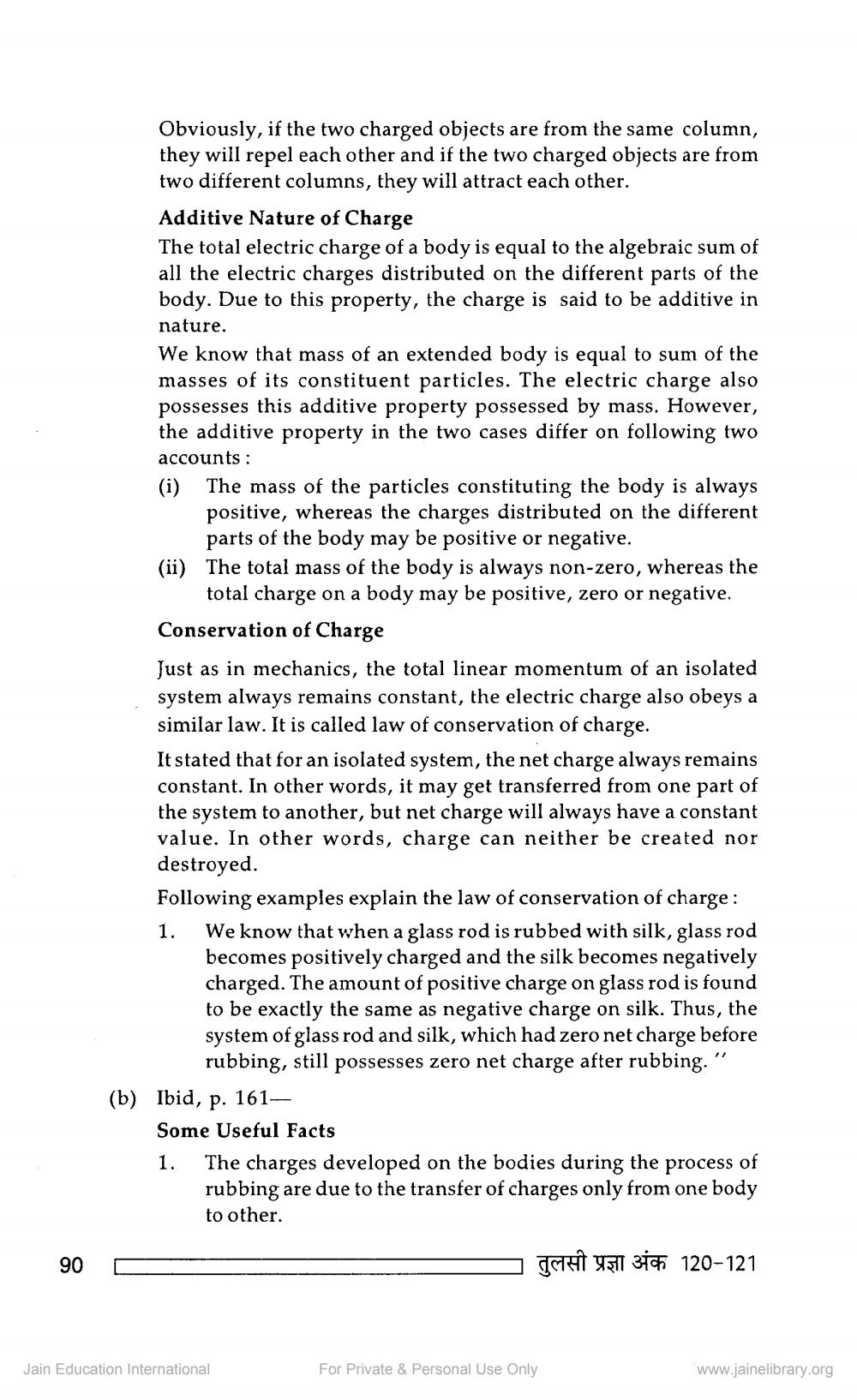________________
90
Obviously, if the two charged objects are from the same column, they will repel each other and if the two charged objects are from two different columns, they will attract each other.
Additive Nature of Charge
The total electric charge of a body is equal to the algebraic sum of all the electric charges distributed on the different parts of the body. Due to this property, the charge is said to be additive in
nature.
We know that mass of an extended body is equal to sum of the masses of its constituent particles. The electric charge also possesses this additive property possessed by mass. However, the additive property in the two cases differ on following two
accounts:
(i) The mass of the particles constituting the body is always positive, whereas the charges distributed on the different parts of the body may be positive or negative.
(ii) The total mass of the body is always non-zero, whereas the total charge on a body may be positive, zero or negative. Conservation of Charge
Just as in mechanics, the total linear momentum of an isolated system always remains constant, the electric charge also obeys a similar law. It is called law of conservation of charge.
It stated that for an isolated system, the net charge always remains constant. In other words, it may get transferred from one part of the system to another, but net charge will always have a constant value. In other words, charge can neither be created nor destroyed.
Following examples explain the law of conservation of charge :
We know that when a glass rod is rubbed with silk, glass rod becomes positively charged and the silk becomes negatively charged. The amount of positive charge on glass rod is found to be exactly the same as negative charge on silk. Thus, the system of glass rod and silk, which had zero net charge before rubbing, still possesses zero net charge after rubbing."'
1.
(b) Ibid, p. 161
Some Useful Facts
1. The charges developed on the bodies during the process of rubbing are due to the transfer of charges only from one body to other.
Jain Education International
तुलसी प्रज्ञा अंक 120-121
For Private & Personal Use Only
www.jainelibrary.org




